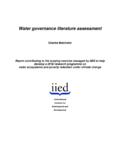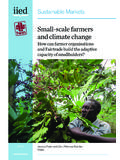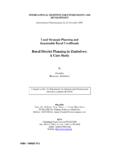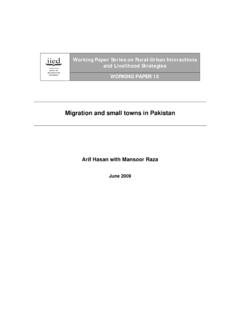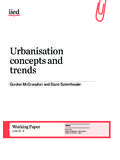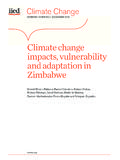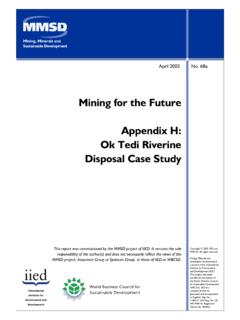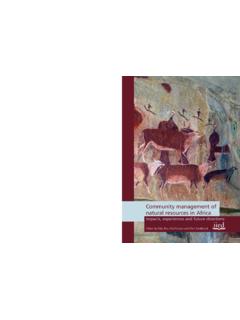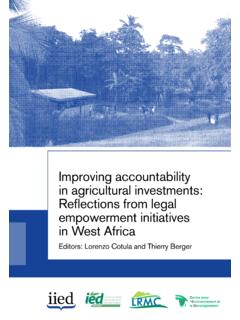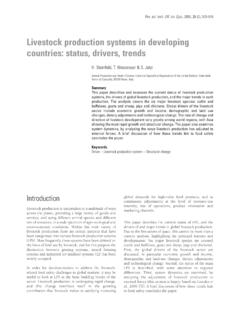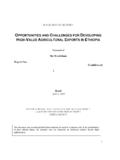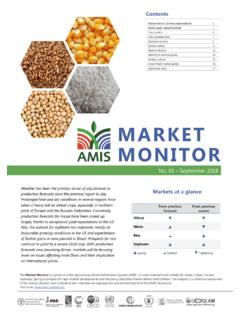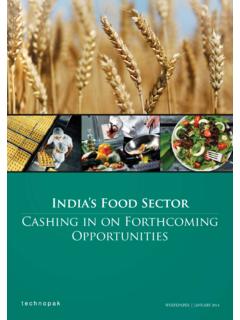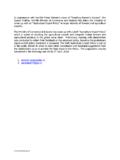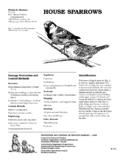Transcription of Small-scale farmers in China in the face of …
1 Knowledge ProgrammeSmall Producer Agency in the Globalised MarketSmall-scale farmers in China in the face of modernisation and globalisationJikun Huang, Xiaobing Wang and Huanguang QiuSmall-scale farmers in China in the face of modernisation and globalisation Jikun Huang, Xiaobing Wang and Huanguang QiuCenter for Chinese Agricultural Policy, Chinese Academy of Science2012 This paper is a product of the Knowledge Programme Small Producer Agency in the Globalised Market. The Knowledge Programme aims to map, elicit and integrate knowledge on the dilemmas confronting Small-scale producers in global, regional and national markets. The programme works with different actors to bring new voices, concepts and insights into the global debate. It thereby seeks to support the development community, including policy makers, producer organisations and businesses, in their search for better informed policies and practices.
2 The programme is led by the Humanist Institute for Development Cooperation (Hivos) and the International Institute for Environment and Development (IIED), and integrates a global learning network, convened by Mainumby acurut in Bolivia. First published in 2012 by the Knowledge Programme Small Producer Agency in the Globalised Market, a joint initiative of:International Institute for Environment and Development (IIED)80-86 Gray s Inn Road, London, WC1X 8 NHTel: +44 (0)20 3463 7399 Fax: +44 (0)20 3514 International Institute for Environment and Development/HIVOSC itation: Huang, J , Wang, X, Qui, H (2012) Small-scale farmers in China in the face of modernisation and globalisation , IIED/HIVOS, London/The Hague. Design: cover Andy Wilkinson, inside Eileen HigginsPrinted by Park Communications, UK on 100% recycled paper using vegetable oil based ink.
3 ISBN: 978-1-84369-869-2A catalogue record for this paper is available from the British publication can also be downloaded from: or work is licensed under the Creative Commons Attribution-Share Alike Works Netherlands Licence. To view a copy of this licence, visit or send a letter to Creative Commons, 171 Second Street, Suite 300, San Francisco, California, 94105, 16PO Box 85565, NL- 2508 CGThe Hague, The the authors 1. Introduction 2. China s agriculture under transition Overview of China s economy Structural changes in China s economy Agricultural growth and structural changes Geographical relocation and concentration of agriculture The nature of Small-scale farming 3. Production, marketing and income generation of Small-scale farmers Land tenure, land-rental markets and small farmers The market, food safety, small farmers and globalisation Individual farmers and farmers cooperatives, including farmers attitudes to collective action Producer perspectives on farming Off-farm employment and migration: gender and age effects Wage rates, increasing wage-earners and the stagnation of male self-employment4.
4 Producer perspectives on farming 5 Concluding remarks : Chinese rice production by county, 2005 : Chinese wheat production by county, 2005 : Chinese maize production by county, 2005 : Chinese milk production by county, 2005 : Chinese pork production by county, 2005 : Chinese poultry production by county, 2005 : Incidence of households renting-in and renting-out land, 2000 : Real wage rates, 1975 : Expenditure on mechanisation services in rice and wheat production nationally and in Jiangsu, 1975 : Labour input in rice and wheat production nationally and in Jiangsu, 1975 : Trends in off-farm employment, 1982 : Trends in wage-earning employment, 1982 : Trends in self-employment, 1982 : Annual growth rates of China s economy, 1970 2010 : Changes in structure of China s economy, 1970 2010 : Annual growth rates of China s agricultural economy, 1970 : Output-value shares in China s agricultural economy, 1970 2010 : Shares of crop-sown areas, 1970 2010 : Descriptive statistics of the nature of Chinese farms, 1985 : Characteristics of households and the incidence of rent-in and rent-out activities in 2000, 2008 and : Changes in agricultural subsidy per household (2007 2008) and in incidence of rent-in and rent-out activities (2008 2009) : Supply and marketing channels of horticultural markets in the Greater Beijing Area, : Contracting arrangements in apple- and grape-producing villages in Shandong, 2005 (%).
5 The structure of dairy production in rural villages in the Greater Beijing area before and after the Milk Scandal (August 2008 September 2009) : Written contracts for dairy farmers who sold milk, by sales channel, Greater Beijing, 2004, 2008 and : Safety and quality inspection of milk, by sales channel, Greater Beijing, 2004 and : farmers attitudes to farmer professional cooperatives (FPCs), : Mechanisation services in rice and wheat production, Jiangsu province, 2002 2010 : Labour inputs by gender in rice and wheat production in Jiangsu province, 2002 2010 : Off-farm employment by age cohort and gender, 1990, 2000 and : Rural labourers employed in wage-earning and self-employment by gender and age cohort, 2000 and : Average earning difference between wage-earners and self-employers by gender, 2000 and 2008 : Employment status and perspective of rural labourers, 20101011121314 1522223133404142567891721212425262727293 23436373944 About the authorsJikun Huang is Director of the Center for Chinese Agricultural Policy (CCAP), Chinese Academy of Sciences (CAS), and Professor at the Institute of Geographical Sciences and Natural Resources Research.
6 He holds a PhD in agricultural economics from the University of the Philippines at Los Banos. His research focuses on agricultural policy and rural development in China and global food security. He founded CCAP in 1995 and has served as director and professor since then. Previously he held research positions at the China National Rice Research Institute, the Institute of Agricultural Economics of the Chinese Academy of Agricultural Sciences, and the International Food Policy Research Institute (IFPRI). Huang has published some 180 papers in Chinese journals and more than 170 papers in refereed international journals, including Nature, Science and the Journal of Development Economics. He has authored or co-authored 17 books. Contact: Wang is an associate professor at the Center for Chinese Agricultural Policy (CCAP), Chinese Academy of Sciences (CAS).
7 She holds a PhD from Martin-Luther University Halle-Wittenberg, Germany. Before joining CCAP, she worked as a research associate in Leibniz Institute of Agricultural Development in Central and Eastern Europe (IAMO), Germany. Her research focuses on the development of labour markets, poverty and productivity analysis in China and other transition countries. She has published several papers in the journals Food Policy, World Development, China Economic Review, and Agricultural : Qiu is currently an associate professor at the Center for Chinese Agricultural Policy (CCAP), Chinese Academy of Sciences (CAS). His major research fields are consumer behaviour and household studies, regional agricultural development, international and domestic agricultural trade policy, applied statistics and general equilibrium model analysis.
8 He obtained his PhD in agricultural economics from the Chinese Academy of Sciences in 2005, and worked at the Center for World Food Studies in the Netherlands as postdoctoral research fellow in 2006. He has published several papers in international peer reviewed academic : The development of China as a global economic power is one of the most dramatic stories of recent decades. China s economy has been the fastest growing in the world since 1980. Rapid growth has occurred in all sectors, including agriculture, accompanied by rapid poverty reduction. In the past 30 years, based on China s official poverty line, the absolute level of rural poverty fell from 260 million (36 per cent of rural population) in 1978 to million ( per cent of rural population) in 2010 (NSBC, 2011).
9 Moreover, the general welfare of most of the population has increased markedly. Many indicators of nutritional status have improved. In fact, by the middle of 2007, China had achieved many of its Millennium Development s agricultural sector has changed dramatically since the late 1970s. It grew at about 5 per cent annually in the past three decades. While significant growth has occurred in almost all cropping sectors, the production of some crops has grown more rapidly (NSBC, 2011a). Hence, crop structure has been changing, diversifying out of staple grains into higher-valued crops (Huang et al., 2010). The same is occurring in terms of the shift out of cropping into livestock, aquaculture and off-farm employment (NSBC, 2011b). While past accomplishments are impressive, there are still great challenges ahead.
10 Income disparity, for example, rose with economic growth. Such disparities are significant between regions, between urban and rural populations, and between households within the same location (Cai et al., 2002; World Bank,2002; NSBC, 2010). The nation s rapid industrialisation, urbanisation and globalisation have been accompanied by rising pressures of inflation, national food insecurity and environmental agriculture, while successful technology innovation has helped China to increase its productivity, China may face great challenges in the future. Rising demand for domestic and industrial water use poses a serious constraint to irrigated agriculture (Wang et al., 2006). Changes in national land policy helped China to increase agricultural productivity in the early reform period, and contributed significantly to the reduction of rural poverty.

